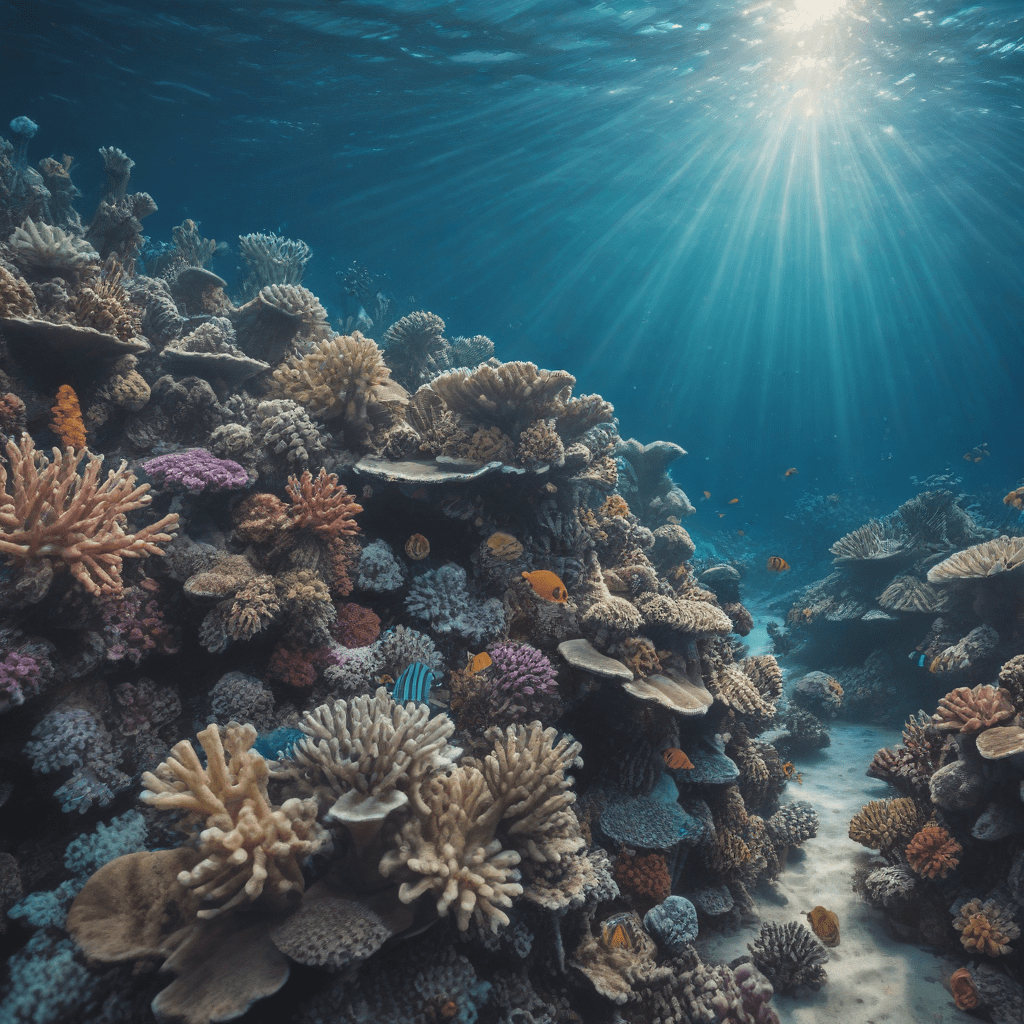
Diving into the Great Barrier Reef: A Marine Wonderland
I. Introduction
The Great Barrier Reef, a UNESCO World Heritage Site, is the world's largest coral reef system, spanning over 2,300 kilometers off the coast of Queensland, Australia. This vibrant underwater wonderland is home to an unparalleled array of marine biodiversity, attracting divers and snorkelers from around the globe to witness its awe-inspiring beauty.
II. The Unparalleled Biodiversity
The Great Barrier Reef is a sanctuary for over 1,500 species of fish, 400 species of coral, and 4,000 species of mollusks. Its diverse marine life ranges from tiny vibrant clownfish to majestic manta rays and curious sea turtles, making it one of the most significant and biodiverse ecosystems on Earth.
III. Vibrant Coral Gardens
The reef's kaleidoscopic coral gardens are a feast for the eyes. Soft and hard corals of all shapes and colors thrive in the warm waters, creating an otherworldly underwater landscape. From delicate branching corals to massive brain corals, each species contributes to the intricate and vibrant tapestry of the reef.
IV. An Abundance of Marine Life
The Great Barrier Reef is teeming with marine life of all shapes and sizes. Divers can encounter playful dolphins, curious humpback whales, and graceful sea turtles. Reef sharks and rays cruise through the crystal-clear waters, while schools of colorful tropical fish dance around the vibrant corals. Each species plays a vital role in maintaining the delicate balance of this marine ecosystem.
V. Exploring the Coral Labyrinth
Diving into the Great Barrier Reef is like stepping into a mystical labyrinth. Swimmers navigate through narrow crevices and gaze upon towering coral walls. Underwater caves and tunnels provide shelter for a myriad of creatures, from shy nudibranchs to inquisitive crustaceans. With every turn, there's a new discovery to be made, immersing divers in the intricate and captivating world of the reef.
VI. Witnessing Marine Interactions
The Great Barrier Reef is a stage for countless marine interactions. Divers can observe cleaner fish removing parasites from larger fish, or witness the thrilling spectacle of a shark chasing its prey. Nesting sea turtles can be seen carefully depositing their eggs in the sandy seabed. These moments provide a glimpse into the intricate relationships and hidden lives of the reef's inhabitants.
VII. The Importance of Reef Conservation
The Great Barrier Reef faces numerous threats, including climate change, pollution, and overfishing. It's crucial to protect this marine treasure for future generations. Sustainable practices, such as responsible diving and reef-friendly sunscreen, minimize our impact on the environment. By raising awareness and promoting conservation efforts, we can safeguard the biodiversity and beauty of the Great Barrier Reef.
VIII. Safety Guidelines for Diving
Diving in the Great Barrier Reef requires adherence to safety guidelines. Divers must be certified and accompanied by an experienced dive operator. Proper dive planning, buoyancy control, and emergency procedures are essential. Respecting the reef and its inhabitants by avoiding touching or disturbing marine life is paramount.
IX. Planning an Unforgettable Dive
Planning a dive on the Great Barrier Reef is an exciting adventure. Consider factors such as the best diving season (May to October), choosing reputable dive operators, and selecting dive sites that cater to your experience level. Whether you're a seasoned diver or a first-timer, there are dive experiences tailored to every skill level.
X. Conclusion
Diving into the Great Barrier Reef is a transformative experience that unveils the wonders of the underwater world. Its unparalleled biodiversity, vibrant coral gardens, and abundant marine life create a symphony of life. As responsible divers, it's our duty to protect this marine paradise while immersing ourselves in its awe-inspiring beauty. The Great Barrier Reef stands as a testament to the incredible diversity and resilience of our planet's oceans.
FAQs
Q: What is the best time to dive the Great Barrier Reef?
A: The best diving season is from May to October, when visibility is optimal, and stinger suits are not required.
Q: How do I choose a reputable dive operator?
A: Look for operators with PADI or SSI certifications, a good safety record, and experienced dive guides.
Q: Is it safe to dive the Great Barrier Reef?
A: Yes, diving the Great Barrier Reef is generally safe when following safety guidelines, including proper dive planning, buoyancy control, and accompanying a certified dive operator.
Q: What are some tips for snorkeling or diving on the Great Barrier Reef?
A: Use reef-friendly sunscreen, avoid touching marine life, stay within designated dive areas, and respect the fragile ecosystem.

